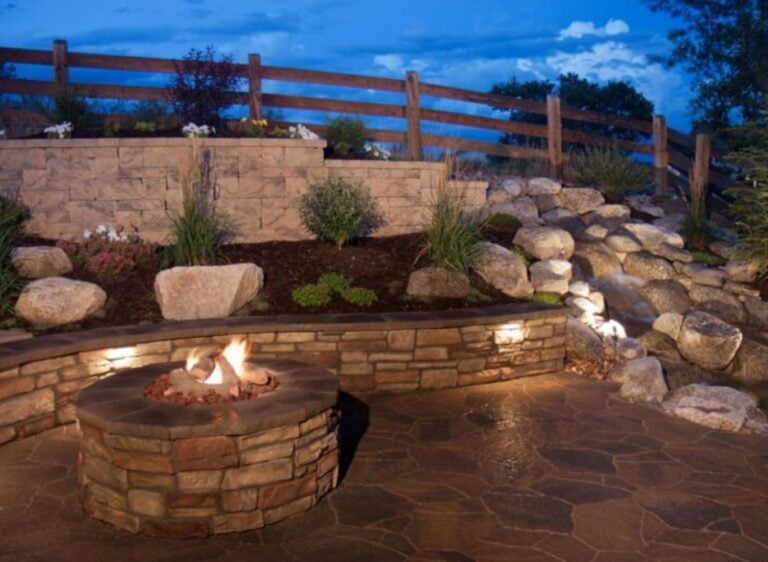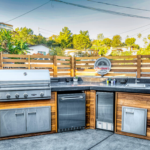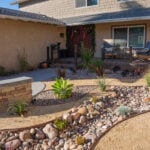Aesthetics, utility, and environmental sustainability are all combined in the art form of landscape design. It’s more than just putting plants and other elements in the right places; it’s about creating an outdoor space that complements the natural world and makes your property look better and function better. To create outdoor places that engage the senses and enhance lives, understanding the fundamentals of landscape design is essential, whether you’re a homeowner looking to improve your curb appeal or an experienced landscaping expert looking for new ideas.
This extensive book delves into the fundamental ideas and professional methods that will enable you to turn any outdoor area into an amazing work of landscape art. Every component, from the careful plant selection to the well-placed focus points, helps to create an outdoor refuge that captures your own style while blending in well with the surrounding environment. These professional suggestions will provide you with the information and motivation you need to revitalize your outdoor haven, whether you’re planning a major landscape makeover or are just looking for little improvements.
Understand Your Space:
Consider your outside space carefully before beginning to create your garden. Think about the geography, size, and form of your yard in addition to elements like soil type and exposure to sunshine. You may use this information to help you choose plants, design your landscape, and add hardscape elements with knowledge.
Define Your Goals for Landscape Design:
Clear objectives should be the first consideration in any landscape design project. Which kind of garden do you want to build—a colorful flower garden, a pleasant outdoor living area, or low-maintenance landscaping? Set your priorities and goals for the area, then let those inform your design choices.
Natural Environment:
Working with, not against, the natural environment is one of the fundamental tenets of landscape design. Consider incorporating existing landscape elements, such as water features, slopes, and mature trees, into your design. In addition to giving the area a more cohesive appearance, this will reduce the need for significant land alterations.
Create Focal Points:
Essential components called focal points are what pique the interest of the viewer and provide the landscape visual appeal. A stunning tree, a fountain with sculpture, or a vibrant flower bed are a few examples of these. Focus points should be positioned carefully to establish hierarchy and balance in your design as well as to draw attention to the special qualities of your outdoor area.
Hard and Soft Elements:
A well-planned landscape creates harmony between its hard and soft components. Soft components like grasses, flowers, and plants offer texture, color, and life, while hard elements like walls, walkways, and buildings define the area and give it structure. To create an outdoor space that is both lively and appealing, use both kinds of features in your design.
The Right Plants for Landscape Design:
Any landscape design project must succeed in choosing the appropriate plants. When selecting plants for your garden, keep things like climate, soil types, and upkeep needs in mind. For year-round appeal, combine evergreen and deciduous plants; for visual impact, change the height, texture, and color of the plants.
Scale and Proportion:
In order to achieve harmony and balance in the outside area, scale and proportion are fundamental landscape design elements. Selecting plants and hardscape elements can help you establish a feeling of scale and proportion. Take into account the size of your yard and the surrounding structures. Steer clear of packing the room with too many large pieces or too many plants.
Incorporate Seasonal Interest:
All year long, a well-planned landscape should offer visual appeal. Plants with different flowering dates and leaf colors will offer year-round beauty. You may also want to add seasonal highlights like spring-flowering bulbs, fall-colored leaves, and winter-hardy evergreen shrubs. Regardless of the season, this will maintain the colorful and welcoming appearance of your environment.
Pay Attention to Details:
Your landscape design might become outstanding by paying close attention to details. To get a polished and unified design, pay attention to little things like plant spacing, mulching, and edging. To give your outside area some last touches that will give it character and charm, think about adding garden decorations, outdoor lights, and colorful pots.
Embrace Sustainability:
Including sustainable principles in your landscape design helps the environment over time and lowers water and maintenance expenses. Think about utilizing climate-appropriate native plants that need less water and upkeep, and use permeable pavement materials that let rainfall seep into the ground. Additionally, if feasible, choose organic gardening techniques and reduce your usage of chemical pesticides and fertilizers.
Landscape Design Success
Beyond merely having a green thumb, creating a beautiful landscape that improves curb appeal involves careful planning, acute attention to detail, and a deep grasp of design concepts. However, you can also use it as a chance to let your imagination run wild and add character and beauty to your outdoor area.
You may take a revolutionary step toward reimagining your outdoor space by using the professional advice provided in this article and connecting with your own creative sensibility. These ideas may be applied to any project—whether you’re starting from scratch, redesigning an existing landscape, or just looking to improve your outside environment.
You can design a landscape that not only makes your house seem better, but also improves your everyday life if you give serious thought to things like space, objectives, and environmental sustainability. Every choice you make helps to create an enticing outdoor paradise that invites you to stay and relax, from choosing the ideal plants to including focus points and adopting sustainable methods. Thus, gather your tools, let your creativity flow, and go off on the thrilling journey of landscape design. You’ll be well on your way to mastering landscape design and turning your outside area into a serene sanctuary of beauty if you’re determined and creative, and follow this professional advice.






